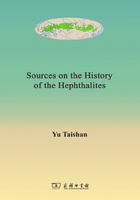
C. Sources in Syriac
1. History of Mār Aḇbā[1]
[1] The History of Mār Aḇbā is a hagiography, its author is unknown.1
1.1 [XXXVII]
1.1.1 After a short time Haphtar[2] Khudai sent a priest as a messenger to the King of Kings (Chosrau Anushirwān)[3], and the Haphtrāye, who were Christians, wrote also a letter to the holy Patriarch (Aḇbā I)[4] requesting him to ordain as Bishop to all the kingdom of the Haphtrāye the priest who was sent from their country. When the priest saw the King of Kings, and the latter learned the nature of the mission on which he was sent, he was astonished to hear it, and amazed at the power of Jesus, and at the fact that even the Christian Haphtrāye counted the Patriarch as their head and administrator. He therefore ordered him to go and adorn the Church as was customary on such occasions, and to ordain Bishop the man whom Haphtar Khudai had sent to him. On the following day the Church was adorned, and the Haphtrian priest was ordained Bishop for the Haphtrians, and joy increased with the people, of the Lord.[5]
[2] Haphtar: The Syriac name for Hephtalites.
[3] Chosrau Anushirwān: Chosrau I [r. 501-579], most commonly known in Persian as Anushiruwān “the immortal soul”. He was the successor of his father Kavadh I [r. 488-531]. Chosrau I was the twenty-second Sasanian Emperor of Persia, and one of its most celebrated emperors.
[4] Aḇbā I: The patriarch of the Church of the East at Seleucia-Ctesiphon from 540 to 552 CE.
[5] In addition to Zoroastrianism, it seems that the Hephthalites were also influenced by Christianity, mainly Nestorianism, and this influence was later than that of Zoroastrianism. According to History of Mār Aḇbā written in Syriac script, in c. 549 CE Mār Aḇbā sent a bishop for all Christians under the dominion of the Hephthalites. Moreover, according to the History of Theophylact Simocatta (V, 10.15)2, there were crosses on the foreheads of the Hephthalites in the army of Bahrām Čōbīn, also known by his epithet Mehrbandak. This is an important clue that early Christianity (Nestorianism) extended to the East.3